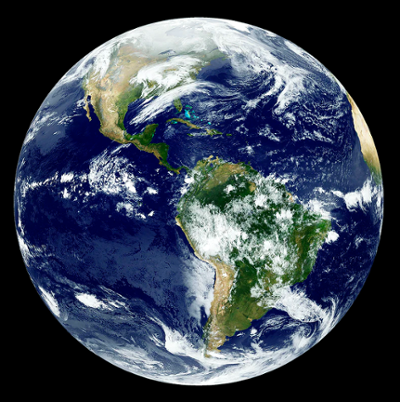Earth Day 2020
Posted by Daniel Hoornweg on April 20, 2020

Fifty years ago, on 22 April 1970, only a few days after Apollo 13 failed to reach the moon but returned safely to earth, 20 million Americans focused closer to home. The largest group of people ever in the U.S. took to the streets, parks and waterways to protest for the environment.
Building from the release of Rachel Carson’s Silent Spring in 1962 and two catalyzing 1969 events – the Cuyahoga River in Cleveland, Ohio catching fire, again, and the Santa Barbara, California oil blowout – on a spring day, 10 percent of Americans demanded action. The environmental movement was born and within a year, the U.S. established the Environmental Protection Agency and passed the Clean Water, Clean Air and Endangered Species Acts. Universities across the country started offering new degrees in environmental studies.
Canadians were just as vocal in demanding action, holding a joint funeral on Earth Day with boats from Windsor and Detroit along the Detroit River as it flowed into ‘the dead’ Lake Erie. In 1969, Pollution Probe was established in Toronto and Prime Minister Pierre Trudeau’s Throne Speech introduced five new environmental statutes.
Following the wave of growing environmental awareness, in 1971, Greenpeace was founded in Vancouver, the province of Ontario passed Canada’s first endangered species protection law, and Environment Canada was established. The following year, the bilateral Great Lakes Water Quality agreement was signed; one of the first international acts to take an ecosystems approach.
Fifty years later, where are we?
Atmospheric concentration of carbon dioxide has increased from 325 parts per million (ppm) in 1970 to more than 416 ppm today (anything over 350 ppm is considered dangerous for climate changes).
The world now wrestles with the COVID-19 pandemic. COVID-19 is another zoonotic disease – at least the 10th major epidemic in the last 50 years brought about by human encroachment on natural ecosystems.
Less than half the species around the Great Lakes today are native, the ecosystem having been ravaged by phosphorous, toxics, road salt, sea lamprey, zebra mussels, and now threateningly, Asian carp.
In 1970, people said ‘enough’ after the fourth river around the Great Lakes caught fire, for at least the fifth time.
Are people again ready in 2020 to say ‘enough’? Is COVID-19 today’s catalyst? And if so, how do we bring in a new wave of environmental action when the challenges are system-wide, require coordinated global efforts, and the problems are as much economic and social as they are environmental?
We’ve learned some things in the past 50 years. Primarily that solutions must be holistic: environmental resolution will be found only when it is tied to economic and social justice. Legislation is a good start but not nearly enough. Everyone needs to be brought along, including the nurses, cashiers, homeless and the truly poor in places like Africa and Asia. The ebb and flow of geopolitics will continue but needs to be tempered by a broader voice (call in the businesses and cities).
Science-based decision-making is necessary and requires good data and clear observations (call in academia). We need low-carbon energy coupled with sensible, sustainable levels of energy and materials consumption. We need international agencies and standards that warrant respect.
In the last 50 years the jungle has grown back, important international institutions have been stifled, co-operation is muted, and much of the world’s hard-earned progress is in danger of being choked by fear and higher walls.
The world cannot get distracted from its environmental objectives. Rather, we should heed COVID-19 as one more, very loud warning bell. COVID-19 should empower us to say with unequivocal conviction, ‘enough’. We are all in this together and we must work together.
Like his father a half-century ago, Prime Minister Justin Trudeau in the next Throne Speech could call on Canadians to emerge from COVID-19 stronger, and hopeful. Canada will need to find its way in a new world of precarious partnerships. We will again be buffeted by circumstance and shifting friends and foes, but our country is anchored atop a strong foundation. Canada and her communities, businesses, and institutions will be called on to ameliorate our global environmental impact, while we strengthen and share our economies.
Fifty years forward, the success of Earth Day 2070 will be measured on two counts: How healthy the planet remains and the well-being of all people. Happy Earth Day.
Daniel Hoornweg, PhD, PEng, is the Richard Marceau Chair in the Faculty of Energy Systems and Nuclear Science at Ontario Tech University and former Chief Safety and Risk Officer of Ontario.
Filed under: Sustainability 101